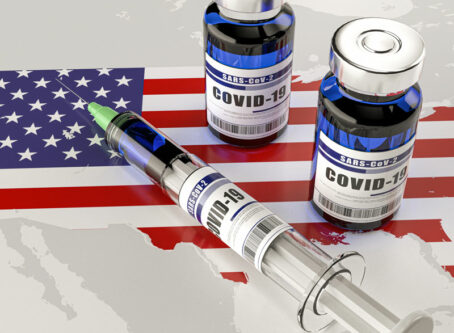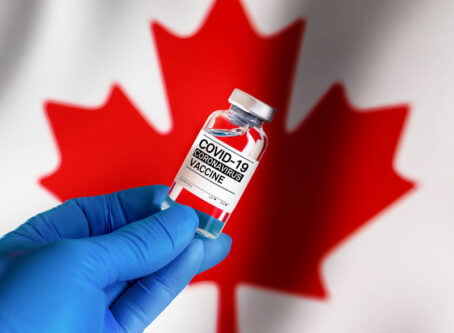Four states issue stay-at-home executive orders due to COVID-19
This story is evolving and will be updated as needed.
The governors of Illinois and New Jersey have joined the governors of California and New York in issuing stay-at-home executive orders for nonessential workers, amid the COVID-19 pandemic.
New Jersey
New Jersey Gov. Phil Murphy announced on March 21 that he signed an executive order directing the state’s residents to stay home.
Murphy signed Executive Order No. 107 on Saturday after California, Illinois and New York governors signed similar orders. The order provides exceptions for obtaining essential goods or services, seeking medical attention, visiting family or close friends, reporting to work, or engaging in outdoor activities.
The executive order also prohibits all gatherings of individuals, such as parties, celebrations or other social events. Individuals out in public must maintain a social distance of at least six feet, excluding immediate family members, caretakers, household members or romantic partners.
All nonessential retail businesses are ordered to shut down. Exemptions include:
- Grocery stores, farmer’s markets and farms that sell directly to customers, and other food stores, including retailers that offer a varied assortment of foods comparable to what exists at a grocery store.
- Pharmacies and medical marijuana dispensaries.
- Medical supply stores.
- Gas stations.
- Convenience stores.
- Ancillary stores within healthcare facilities.
- Hardware and home improvement stores.
- Banks and other financial institutions.
- Laundromats and dry-cleaning services.
- Stores that principally sell supplies for children under five years.
- Pet stores.
- Liquor stores.
- Car dealerships, but only for auto maintenance and repair, and auto mechanics.
- Printing and office supply shops.
- Mail and delivery stores.
The order also allows the Attorney General and State Police to control the direction of flow of vehicle traffic on any road, including state and interstate highways. Penalties may be imposed for noncompliance of any part of the executive order.
The order goes into effect at 9 p.m. on March 21 and remains in effect until further notice.
Illinois
On Friday, March 20, Illinois Gov. J.B. Pritzker signed Executive Order 2020-10, a stay-at-home order that includes strict travel restrictions for the state’s residents.
Unlike shutdown orders issued in California and New York, the Illinois order prohibits all travel, including travel by automobile, motorcycle, scooter, bicycle, train, plane and public transit. Exceptions are made for essential travel and essential activities.
Essential activities include:
- Health and safety, e.g., seeking emergency services, obtaining medical supplies/medication, visiting a healthcare professional.
- Necessary supplies and services, e.g., groceries, household consumer products, work-at-home supplies, sanitation (including the delivery of such products).
- Outdoor activity, e.g., walking, hiking, running or biking.
- Taking care of others.
According to the executive order, all Illinois residents are to remain at home except for essential activities and essential business. Whenever people are using shared or outdoor spaces away from home, they are to maintain social distancing of at least 6 feet.
Exempt workers include:
- Healthcare operations.
- Human services operations.
- Essential infrastructure (e.g., construction, food delivery, building management/maintenance, airport operations, etc.).
- Essential government functions (first responders, dispatchers, etc.).
- Grocery and medical retailers.
- Charitable/social services charities.
- Gas stations.
- Financial institutions.
- Hardware stores.
- Mail, post, shipping, logistics, delivery and pick-up services.
- Educational institutions (distance learning or critical research).
- Laundry services.
- Restaurants for consumption off-premises.
- Work-from-home supplies.
- Transportation (airlines, taxis, ridesharing, etc.).
- Hotels and motels.
- Funeral services.
Homeless individuals are exempt, but are “strongly urged to obtain shelter, and governmental and other entities are strongly urged to make such shelter available,” according to the executive order. Furthermore, people who feel that their residence is unsafe, including domestic violence victims, are permitted and encouraged to leave their home and seek alternative, safe shelter.
All public and private gatherings of any number of people occurring outside a single household are prohibited. Any kind of gathering of more than 10 people also is prohibited.
During the order, all evictions will be prohibited. However, this does not relieve individuals of the obligation of paying rent/mortgages and complying with tenant rules.
The executive order allows enforcement by way of state and local law enforcement.
California Executive Order N-33-20
Two weeks after declaring a state of emergency, Gov. Gavin Newsom signed Executive Order N-33-20 on Thursday, March 19. The order requires all Californians “to stay home or at their place of residence except as needed to maintain continuity of operations of the federal critical infrastructure sectors.”
Essentially, anyone in California who does not work in one of the 16 identified “critical infrastructure workforce” must stay home. Those critical infrastructure sectors are:
- Chemical sector.
- Commercial facilities sector.
- Communications sector.
- Critical manufacturing sector.
- Dams sector.
- Defense industrial base sector.
- Emergency services sector.
- Energy sector.
- Financial services sector.
- Food and agriculture sector.
- Government facilities sector.
- Healthcare and public health sector.
- Information technology sector.
- Nuclear reactors, materials and waste sector.
- Transportation systems sector.
- Water and wastewater systems sector.
These sectors are considered “so vital to the United States that their incapacitation or destruction would have a debilitating effect on security, economic security, public health or safety,” according to the executive order. The governor may add to the list of critical sectors as needed.
The order does not place Californians on complete house arrest.
Essential services will still be provided for California residents, including gas stations, pharmacies, grocery stores, convenience stores, take-out/delivery restaurants, banks and laundromats. However, full closers have been established for dine-in restaurants, bars/nightclubs, entertainment venues, gyms/fitness studios, conventions centers and public events and gatherings.
California’s stay-at-home order is in effect until further notice.
Enforcement of the order will be based on what Newsom called a “social contract” rather than through law enforcement.
“People will self-regulate their behavior,” Newsome said during a news conference. “They’ll begin to adapt and adjust as they have been quite significantly. We will have social pressure that will encourage people to do the right thing.”
Before the statewide order, approximately 21.3 million Californians were already under a similar order through a local or county government. California’s population is approximately 40 million people.
As of noon on March 20, California had more than 1,000 confirmed cases of COVID-19, including 19 deaths. California has the third most confirmed cases in the United States, behind New York and Washington state.
New York’s PAUSE executive order
Meanwhile in New York, Gov. Andrew Cuomo signed an executive order mandating 100% of the workforce must stay home, excluding essential services such as pharmacies and grocery stores.
During a news conference on the morning of Friday, March 20, Gov. Cuomo announced the new executive order that will keep millions of people at home, including the largest city in the nation. The governor said the best way to slow the spread of COVID-19 is to reduce density. Cuomo said the state needs to practice density control through a metaphorical “density control valve.”
“That is what we have been doing all along,” Cuomo said. “We are going to take it to the ultimate step, which is we are going to close the valve.”
Making an announcement on the State’s response to the #Coronavirus pandemic. WATCH: https://t.co/m4OJce0oBA
— Andrew Cuomo (@NYGovCuomo) March 20, 2020
Cuomo had previously reduced the workforce by 50% and then to 75%. The latest executive order reduces the workforce by 100%, with the exception of the essential services.
Dubbed PAUSE (Policies Assure Uniform Safety for Everyone), the new policies boil down to two rules: Only essential businesses will be functioning and people should remain indoors to the greatest extent possible. Rules to follow are broken down to two groups: vulnerable and nonvulnerable populations.
The strictest rules are for the most vulnerable people, which includes seniors over 70, immune-compromised people and those with underlying illnesses. Called Matilda’s Law, the name of Cuomo’s mother, those rules are:
- Remain indoors.
- Can go outside for solitary exercise.
- Pre-screen all visitors and aides by taking their temperature.
- Do not visit households with multiple people.
- All vulnerable persons should wear a mask when in the company of others.
- To the greatest extent possible, everyone in the presence of vulnerable people should wear a mask.
- Always stay at least 6 feet away from individuals.
- Do not take public transportation unless urgent and absolutely necessary.
The following are executive order provisions for nonvulnerable people:
- Nonessential gatherings of individuals of any size for any reason are canceled or postponed.
- Any concentration of individuals outside their home must be limited to workers providing essential services and social distancing should be practiced.
- When in public, individuals must practice social distancing of at least 6 feet from others.
- Businesses and entities that provide essential services must implement rules that help facilities social distancing of at least 6 feet.
- Individuals should limit outdoor recreational activities to noncontact and avoid activities where you come in close contact with people.
- Individuals should limit use of public transportation to when absolutely necessary and should limit potential exposure by spacing out at least 6 feet from other riders.
- Sick individuals should not leave their home unless to receive medical care and only after a telehealth visit to determine if leaving the home is in the best interested of their health.
- Young people also should practice social distancing and avoid contact with vulnerable populations.
- Precaution: isopropyl alcohol wipes.
Unlike California, Cuomo is taking legal measures to enforce PAUSE provisions. The state will hand out civil fines and mandatory closures for businesses not in compliance.
Identifying a need for regional actions, Cuomo will be speaking with the governors of Connecticut, Delaware, New Jersey and Pennsylvania about implementing similar orders. On Thursday, March 19, Pennsylvania Gov. Tom Wolf ordered all nonessential businesses in the state to shut down.
New York has the most confirmed cases of COVID-19 in the United States. As of publication, there were 7,100 confirmed cases, an increase of nearly 3,000 from just the day before and an increase of 750% from the beginning of the week. Washington has the second most confirmed cases, at nearly 1,400, but the most deaths at 74. There have been only 36 COVID-19 deaths in New York.
Although New York has near seven times more reported cases than California, that does not necessarily reflect the reality of actual cases. Cuomo pointed out that New York has conducted more tests per capita than any other state. As of March 20, more 32,000 tests have been conducted in New York.









